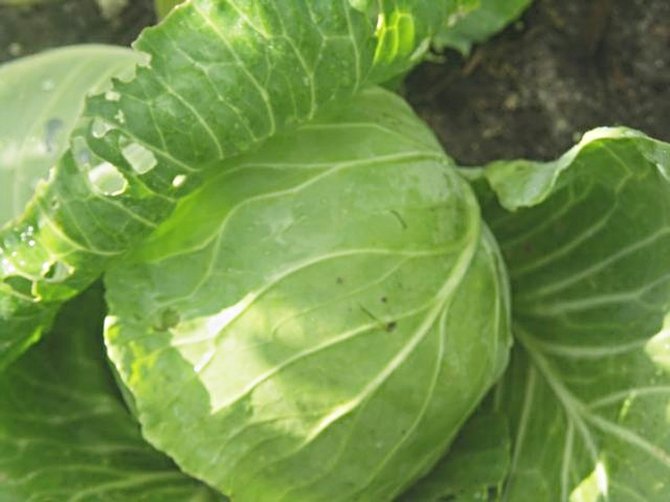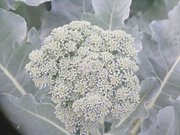All members of the cabbage family require lots of feeding and lots of water and are called gross feeders. Give them the fertilizer and water and you will have guaranteed returns.
Here in the Bahamas heading cabbages are best planted where you want them to grow. Plant the seeds 14” to 16” inches apart in rows and have a few on the side to take the place of any seeds that do not germinate. Cabbages do best in the 60-70 degree range but are tolerant of temperatures higher and lower.
The ground should be prepared with compost or commercial cow manure mixed into the soil to condition it, adding granular fertilizer as you dig the compost in, and then another sprinkle of fertilizer (6-6-6) over the surface, Water every day for a week or so before planting the seeds.
Cabbages need vigorous growth right from the beginning. Any plants that stand still in their growth are likely to be failures. That is why planting the seeds where you want your cabbages to grow is important – you do not have to transplant and shock the seedling in the process.
To avoid having a cabbage glut one should plant only a few cabbage seeds every few weeks, but of course nobody has that kind of discipline. If you have mature cabbages that you are not ready for, run a machete or sharp spade in the earth around the stem in order to cut away most of the roots. This also will prevent cracking in the event of heavy rain.
A large white head of cauliflower is one of the supreme rewards of growing a vegetable garden. To achieve correct blanching the leaves must be tied together to keep sunlight away from the curds as they develop. Do this even if your seed packet says self-blanching. Undo the leaves every two days for a quick inspection and to remove any grubs or worms that might have appeared.
Broccoli is the most popular member of the cabbage clan these days and is very good for you in many ways. I like to grow the variety Calabrese that gives a moderate initial head but then provides flowerets for many weeks thereafter.
The flowerets should be picked every two days and stored in a plastic bag in the refrigerator until you have enough for a meal. I do not particularly enjoy broccoli heads but can tolerate the flowerets on occasion. They are the ideal size for throwing into stir-fries. I understand some people eat them raw but that is too crude for me.
I do, however, love Brussels sprouts but they are very much a marginal crop in the Bahamas. That said, Loretta Minnis in Nassau always used to have excellent specimens growing during the winter season. How she did it I do not know.
Brussels sprouts need a lower temperature than we usually experience and the sprouts are even nuttier when touched by a frost. Little hope of that, but the fall and winter temperatures may be cool enough to give a crop.
Once the sprouts have reached marble size the branch below each sprout should be broken off. When the spouts are close to full size the foliage at the top of the stalk should be cut off and what you remain with is a bare stalk – except for the attached sprouts. The sprouts can remain on the stalk for several weeks before being picked.
Kohlrabi is a very different member of the cabbage clan because it looks like a turnip. The flavour is very different and not at all bitter. Kohlrabis should be harvested when they are 2”-3” in diameter. You can peel kohlrabis and either julienne or cube them. Toss them into slated boiling water for a few minutes and you have a delicate side vegetable, especially with the addition of a cream sauce. Julienned kohlrabi can be added to stir-fries.
Treat them right and your cabbages, cauliflowers, broccoli and kohlrabi will not let you down. Good luck with the Brussels sprouts.
•j.hardy@coralwave.com






Comments
Use the comment form below to begin a discussion about this content.
Sign in to comment
Or login with:
OpenID